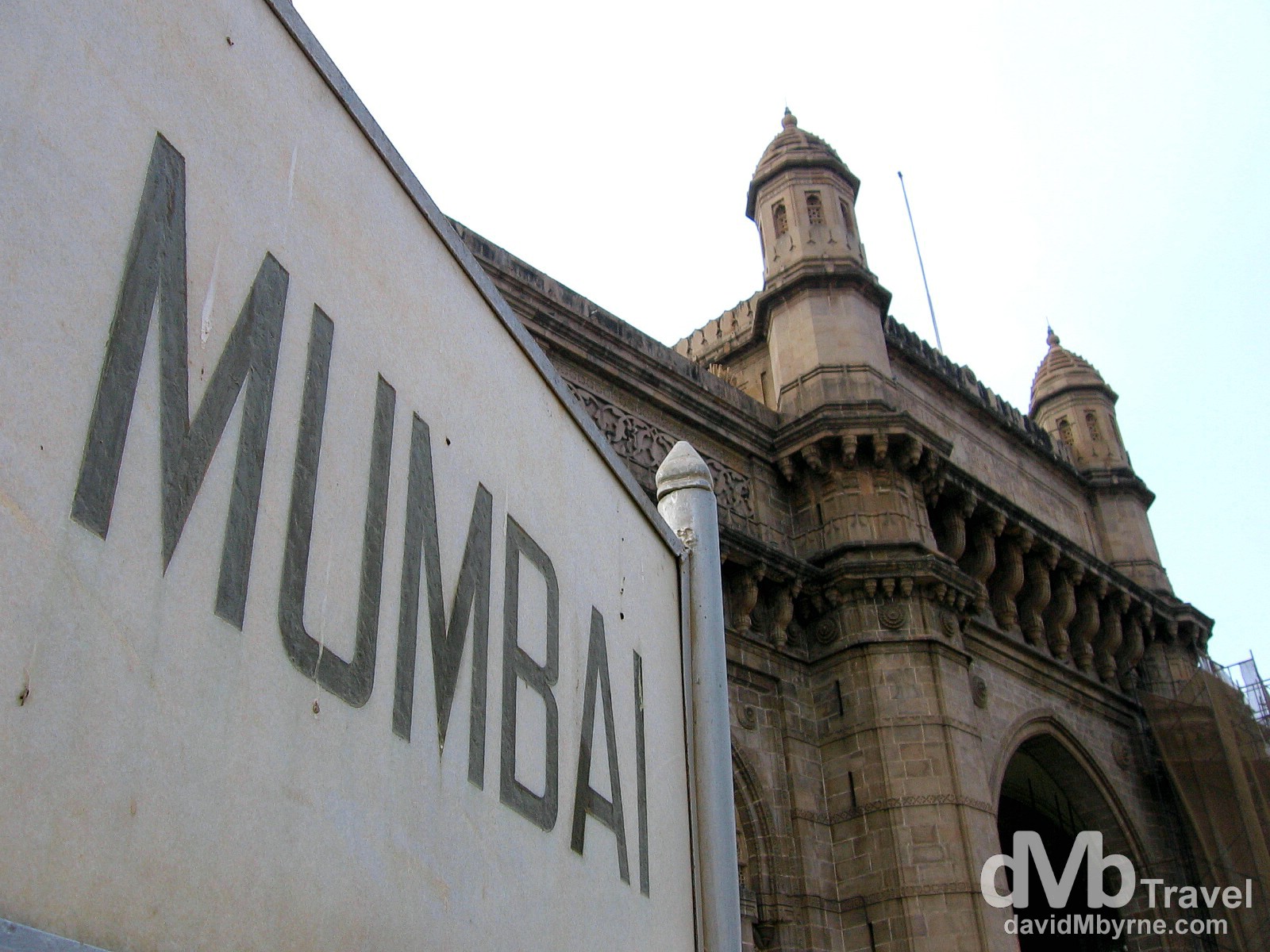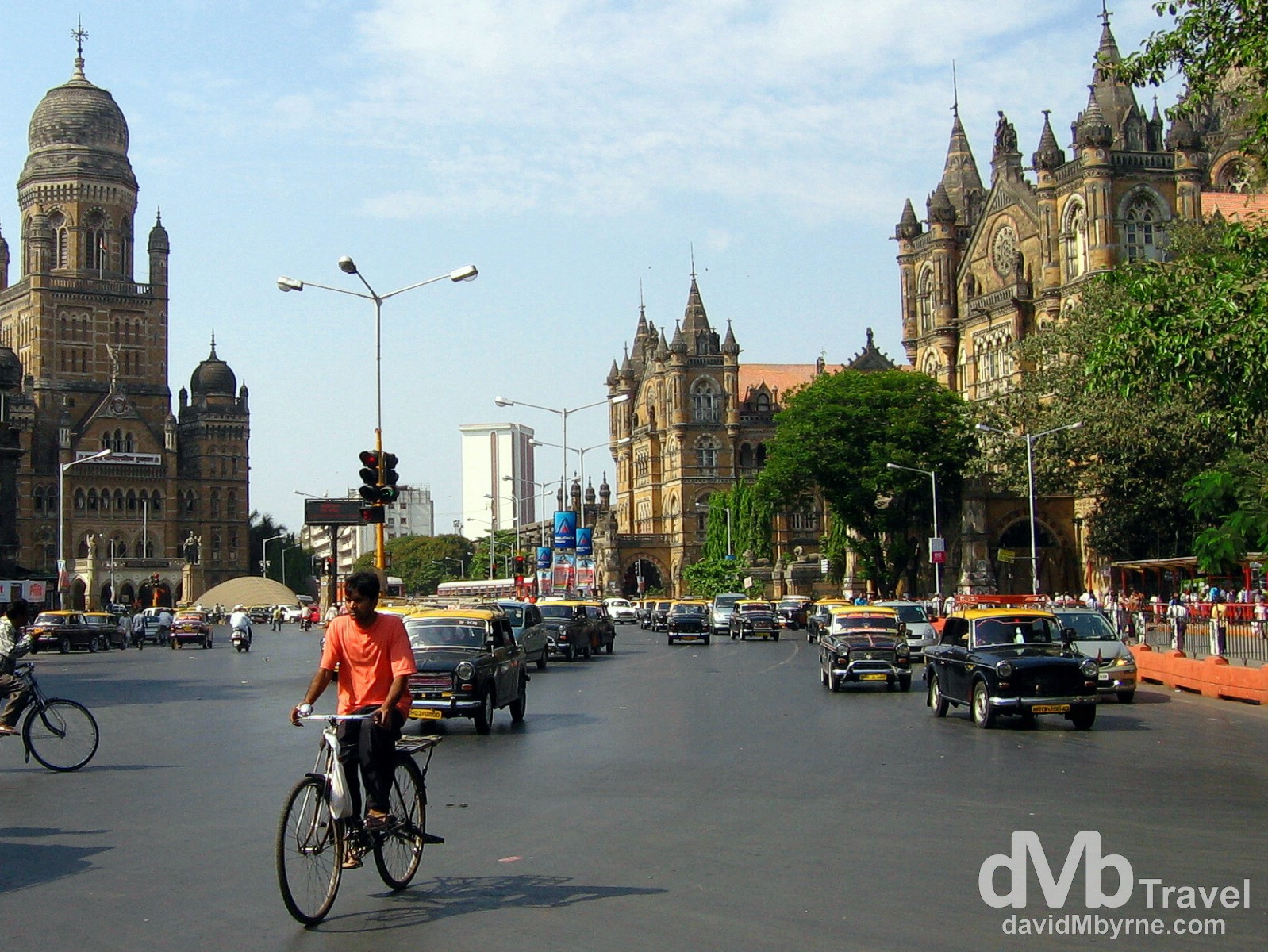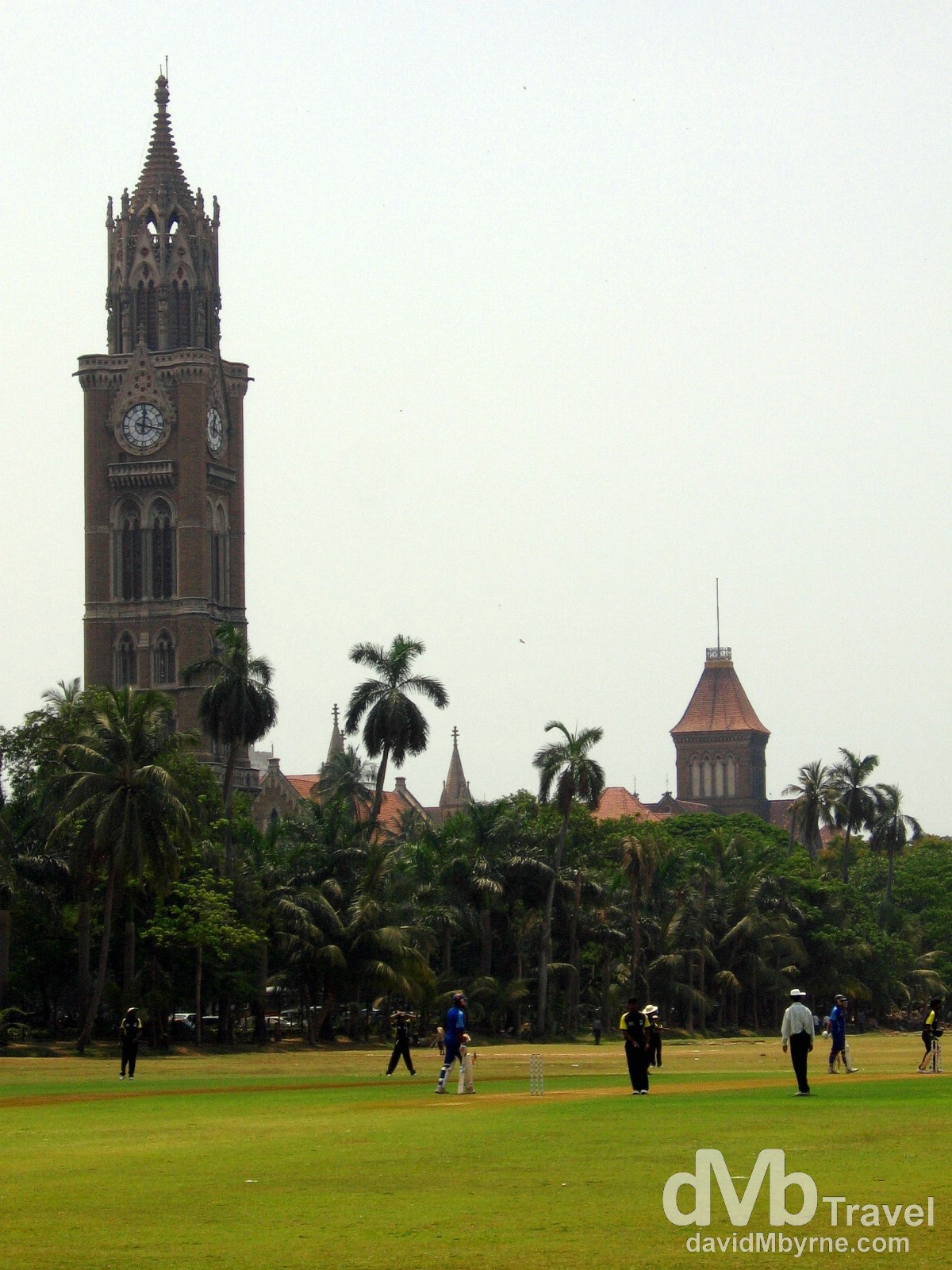It is true that travelers tend to regard time spent in Mumbai, in the Indian state of Maharashtra, as a rite of passage to be survived rather than savored. And it is also true that you need more than the one day we had at our disposal in the city in order to fully acclimatize to the hassles, relentless crowds, appalling poverty and the general what-the-hell-am-I-doing-here? doubts the city throws up. This is India’s biggest, most populous, richest, most dynamic and westernised city and it’s somewhere I remember all too well. This place scared the you-know-what out of me on my first visit back in November 2002, and while the city is still as frenetic now as it was back then, at least now I am not walking around with the rabbit-in-the-headlights daze that I wore back then as I navigated the streets, stepping over whole families camped out homeless on the side of the road and stepping around cows, cars, buses and seething masses of people all walking with intent somewhere.
– Aldous Huxley commenting on Bombay

The Gateway of India, probably the most famous monument in the city, is a 26-metre high basalt triumphal arch built on the waterfront by the Brits (who else) in 1924 to commemorate the arrival in India, on 2nd December 1911, of King George V and Queen Mary. Ironically when the Raj ended in 1947 this colonial symbol also became a sort of epitaph: the last of the British ships that set sail for England left from the Gateway. Today this symbol of colonialism has got Indianised, drawing droves of local tourists and citizens. The Gateway of India, Mumbai/Bombay (![]() ), Maharashtra, India. April 4, 2008.
), Maharashtra, India. April 4, 2008.
The Brits, God bless them, arrived here as far back as the 1660’s making Bombay, as they called it, one of their 1st footholds in India, and a very profitable one at that if the wealth of 17th century colonial-Gothic buildings dotted around the city are any indication. The opening of the Suez canal in Egypt in 1869, and the trade corridors it open, further cemented Bombay’s status as India’s most prosperous city, a title it still holds today – the city alone accounts for 40% of India’s GNP. It is this wealth that attracts thousands of economic refugee’s to the city every year, all lured here with the hopes of finding their pot of gold and with it the security they crave. Very few find that pot of gold and instead the majority find themselves, and their families, adding to the homeless population on the already overcrowded streets or living amid the squalor in the slums on the outskirts of the city, some of the largest slums in Asia.

The Nagar Chowk intersection in Mumbai/Bombay, one of the city’s busiest traffic junctions. I took this exact same picture on my first visit to Mumbai back in November 2002. Overlooking the intersection, to the right of the picture, is the Chhatrapati Shivaji Terminus, formerly Victoria Terminus and better known by its abbreviation CST or Bombay VT. The historic railway station, which serves as the headquarters of the Indian Central Railways, was designed in the Victorian Gothic style by Frederick William Stevens in the 1880’s. The building took ten years to complete and was named Victoria Terminus in honour of the then reining Queen Victoria. It’s a pretty impressive lump of rock (from the outside at least) and is the second most photographed building in India after the Taj Mahal (and you don’t even have to pay to see it). UNESCO like it too as they designated it a World Heritage Site in July 2004, classing it as an ‘outstanding example of Victorian Gothic Revival architecture’ and ‘an outstanding example of the meeting of two cultures, as British architects worked with Indian craftsmen to include Indian architectural tradition and idioms thus forging a new style unique to Bombay.’ I guess UNESCO didn’t venture into the dark and musty interior. Trust me; in there it’s 100% India, 0% England. Mumbai, Maharashtra, India. April 4, 2008.
Yes, this is the place to come if you want to see India at its coronary inducing best and certainly the best/worst place to come to be shaken out of the Goa beach bubble you might find yourself in. We arrived in the city this morning off the overnight train from Goa. We were supposed to arrive at 6 a.m. but thanks to a 3 hour delay departing Goa we actually arrived at 9 a.m. When we got off the train we mustered up a big one-more-day-in-India effort; we took a deep breath, sharpened our elbows, adopted that unmistakable no-thank-you frown and rediscovered our don’t-even-touch-us stare before setting out to find a bed for the one night we will spend here. Mission accomplished; and it was easier than we expected in a city renowned for its scarcity of reasonably priced accommodation. The Salvation Army came to our, well, salvation I guess as we secured an oh-so dingy room in their aptly named Red Shield hotel. We didn’t like the room much, but it was slap bang in the Colba area of the city and totally adequate for a single night stay. And anyway, we loved the fact that the view from the almost-in-one-piece window of our €10 a night room, albeit the almost-in-one-piece window in our bathroom, looked out on the most expensive hotel in the city, the US$300-500 a night Taj Mahal Palace.
“What’ll we do now Dave?” Pat asked me at 10 a.m. this morning having settled into the hotel.
“We will take it easy Lad, or as easy as one can take it in Mumbai. Maybe take a look at a few of those fancy colonial buildings,” I suggested.
“Right so.”
And that’s what we did. For most of the afternoon we walked around the obstacle course that is Mumbai’s streets pointing our cameras at buildings as we went. We also sat in the Oval Maidan, in the shadow of some of Mumbai’s most impressive colonial buildings, for over 2 hours watching a cricket match. And ee finished off the day as we meant to; in a bar. We found (of course we did) as close as we could find to an Indian bar/café, one full of single male Indians sitting over bottles of whiskey with things-can-only-get-better looks on their faces. Things did get better for us, Kingfisher by Kingfisher, and we managed to get through our last day in India just like we had managed to get through all the others before it.

A game of cricket on the Oval Maidan in Mumbai/Bombay. Two 2 hours were passed effortlessly here watching a cricket match in the shadow of some of Mumbai’s most impressive colonial buildings. There are, we assume, worse ways to pass a few hours in Mumbai. The Oval Maidan, Mumbai, Maharashtra, India. April 4th 2008Mumbai/Bombay, Maharashtra, India. April 4, 2008.
The worst part of this day was easily the moment, half way through what was to be our last Indian Kingfisher, when we remembered that we had a depressingly early start in the morning. Our flight out of Mumbai leaves at 7:35 a.m. meaning we’ll be setting the alarm clock (assuming we can find it… it’s been a while since it was last used) for 4 a.m. The flight will end our overland odyssey, one that began way back on February 14, 51 days ago now, in Beijing, China. If I had the time I’d like to sit down and approximate the amount of kilometres we’ve covered in those 51 days, and the amount of hours we’ve spent inside trains, buses and 4×4’s. But I don’t have the time, and nor do I have the time to sit here and attempt to put into words how amazing an experience it has all been.
Recent Observations
· One final Indian delay?
I guess we should be thankful the latest Indian train delay was only 3 hours (no excuse given of course) and that we didn’t have to spend it in some station control room being stared at by curious Indians. Nope, we spent it on the platform instead with hundreds of equally curious Indians, not to mention sufficiently hungry mosquitoes.
· Different
I found Mumbai to be different to how I remember it being 5 years ago. The changes were good, and very un-Indian like. We didn’t see any cows on the street, no auto-rickshaws (seemingly they have been banished to the more polluted outskirts) and very few beggars (maybe they have been banished too). The streets seemed more ordered, tidier & generally less chaotic. Of course they are probably not; maybe I’ve grown a thicker skin in the 5 years I’ve been away and maybe they still are the manic, noisy confusion of chaos and mayhem that I remember them to be.
· “Jolly good old son”
I found it surprising that I actually enjoyed watching a game of cricket in Mumbai’s Oval Maidan. Until today cricket was a spectacle I found about as enjoyable as watching paint dry. Pat, an avid cricket fan, knew that and shortly after looking at the scoreboard went to work on me.
“Right Dave. The game is in the 2 inning, the team batting is chasing a score of 156 runs. It’s the 6th over, no wickets have fallen and the bowler, who has just bowled a wide, has 4 balls left.”
“Say what lad? Come again,” I said clearly lost as to the meaning of what he had just said.
And so it was that over the next 2 hours I received my education on that great bastion of Englishness, cricket. I never did ask him if I was a good or bad student. I probably didn’t want to know the answer.
· No upkeep
As we walked around Mumbai today we wondered did the Indians actually realise that without the colonial buildings we spent the afternoon gawking at there would be very little reason for anyone to want to have to deal with the city’s madness. We assume they don’t and that probably explains why they don’t seem to make any effort whatsoever to keep the buildings in good condition. Looking at VT terminus train station today, Mumbai’s main train station in the city and the grandest of all the colonial buildings, we couldn’t help but comment on the fact that the building probably hadn’t received any attention, apart from the attention it receives from tourist’s cameras, since it was built by the British in 1887. And it’s like that with all the buildings, most of which are still in use today; they all look like they have just been left to fall apart, with the inside of VT terminus resembling a dark, dusty barn.
· Beating The Odds
We got to talking over our final few Kingfisher beers tonight about China & India, a sort of retrospective look. The conversation developed into one in which we found ourselves agreeing, unquestionably, that we lucked out by not being born into either country. We definitely beat the odds (as did any non-Indian or non-Chinese reading this, well done) considering the odds of entering the world as either Chinese or Indian is approximately 40:1 – collectively the Chinese & Indians make up 40% of the World’s population. We then tried to calculate the odds of being born Irish (after all, there are only 4.3 million of us out of a World population of 6.4 billion) but too may Kingfishers, coupled with the lack of a calculator, made that a task beyond our abilities at the time. We made a attempt but quickly gave up, unquestionably agreeing once more that we’d definitely beat the odds there too. Slainte!
· No Salvation
There’s no such thing as a free lunch, unless you stay, like us, at the Salvation Army Red Shield guest house here in Mumbai. The Salvos are good enough to care about the nutritional intake of their guests and thus they include 3 meals with the room rate. We’re going to miss our free breakfast in the morning (because we’ll be out of here at 4 a.m.) and we missed our free lunch this afternoon (because we were watching cricket) but we did leave the bar this evening to head back around the corner in time for dinner, a dinner that had Pat wishing we had stayed in the bar supping Kingfishers & being thankful we’re not Inidian.
“Liver! I hate liver, it’s the cheapest cut you can get” he informed me, before going on to tell me that he likes his peas and carrots to actually taste like peas and carrots.
I didn’t see anything wrong with the meal and we both agreed that the spuds were the best part. Pat cheered up when we returned to the bar for a final few Kingfishers.
· Oh Man
Pat keeps asking me why we’re going to Oman, our next stop.
“Muscat! What? Where’s that Dave?”
“It is in Oman, Lad. It is the capital city. And from what I gather people go there to experience a real, authentic and hereto relatively undiscovered corner of the Arabian Peninsula.”
I kind of like that answer but it doesn’t seem to wash with Pat and I’ve told him I’ve little else beyond that to entice him with. As I said, we really don’t know what to expect.
______________________________________________________________________
